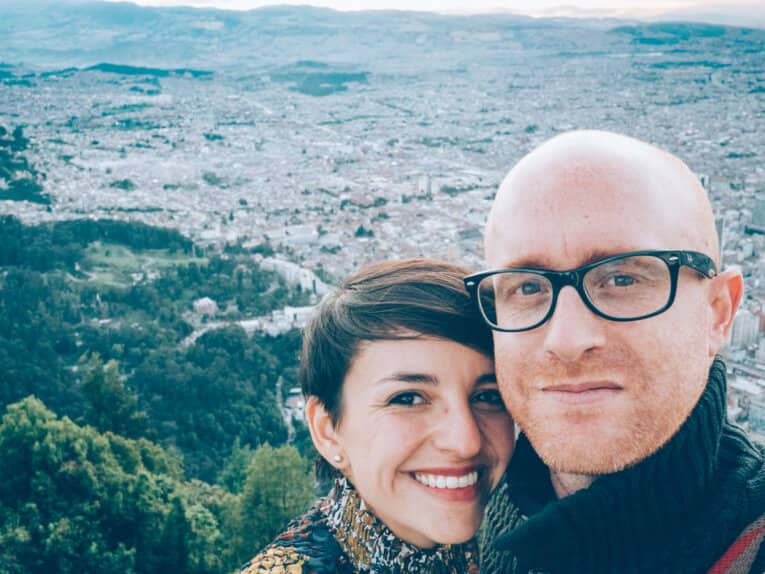“The 16th century. From the four corners of Europe, gigantic sailing ships set out to conquer the New World. Aboard these ships, men eager for dreams, adventure and space, in search of fortune.
Who hasn’t dreamed of subterranean worlds, distant seas populated by legends, or of sudden riches to be found at the bend of a path in the Andes?
Who hasn’t wished to see the sovereign sun guiding their steps towards the wealth and history of the Mysterious Cities of Gold?”
So spoke Zarathustra. MMMMmmm No. So spoke the voice-over from the credits of my childhood cartoon “The Mysterious Cities of Gold”. El Dorado, the myth of a place even greener than the neighbor’s garden. El Dorado, a myth born here in the Laguna de Guatavita.
Contents
Related articles
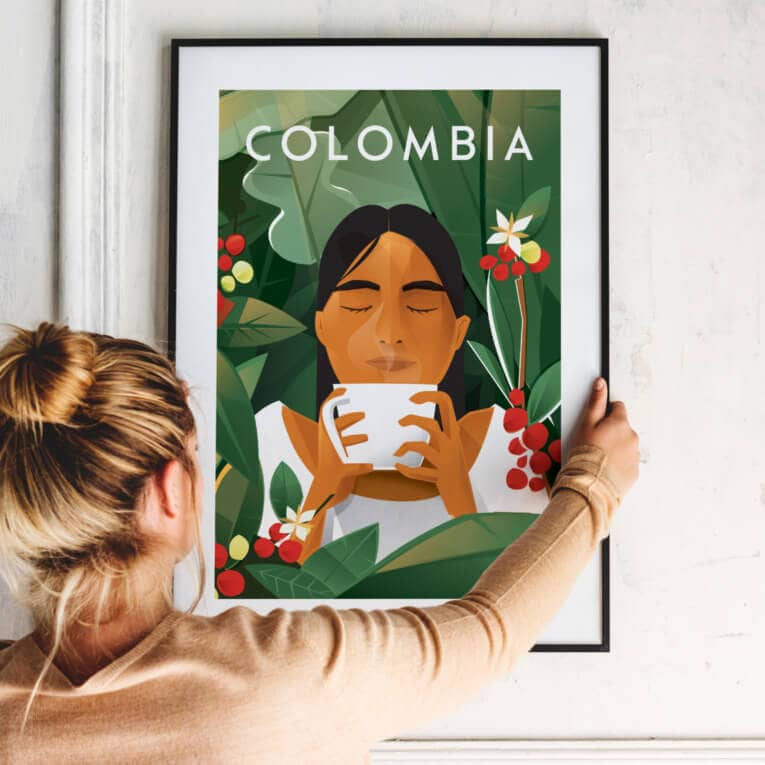
Travel Poster “Café de Colombia”
Buy our beautiful prints to get a taste of Colombia at home
Disclaimer: we apologize in advance for any grammatical or syntactic errors, as our native language is not English (we're a Colombian-French couple), so we hope you'll forgive us and still enjoy the information we share with you! Please note that all the information on our blog is based on our own experience, and is checked and updated regularly.
The myth of El Dorado
Laguna de Guatavita
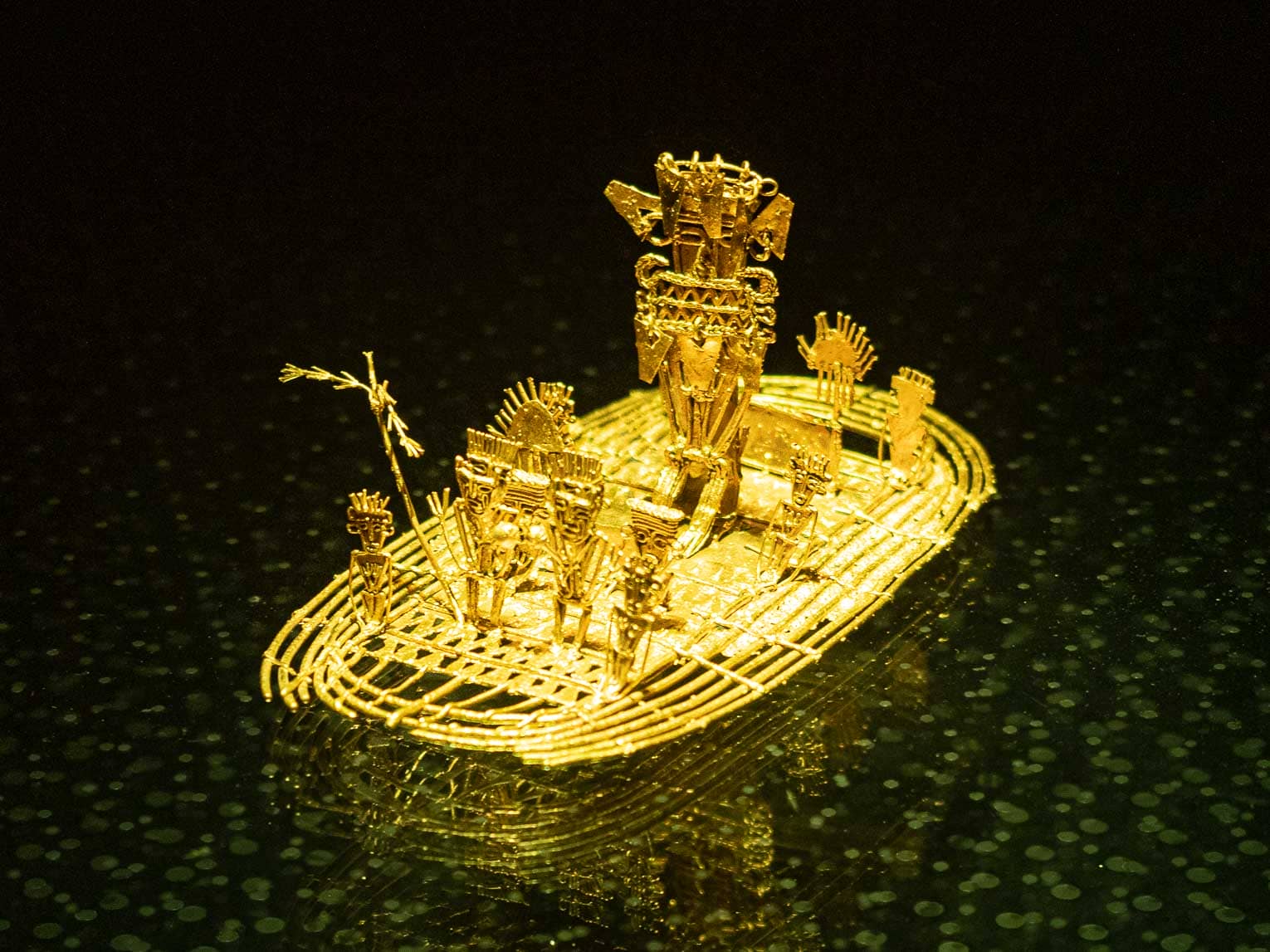
It all began a long, long time ago. In Colombia. Before us. Before other people. We spoke Chibcha and called ourselves Muiscas, “the men”. Weaving, carving, singing, worshipping, ceremonializing… Communion with gods, ancestors, nature… offerings, rituals, sacrifices, legends… the Muiscas had sacralized the lagoons perched in the mountains around present-day Bogotá.
During exceptional ceremonies, all the Muisca tribes and other indigenous tribes from neighbouring countries would gather around the lagoon. Multiple offerings were thrown in from the bottom, gold, emeralds, to celebrate the gods, to call for a good harvest, to make something important happen… The tribal chief, the cacique, was coated in gold dust to go and impregnate the lagoon, emerging washed and purified by its beneficent water.
This legend, of ceremonies where gold flowed in abundance, made its way around the world, only to fall on the ears of the conquistadores of the time, helping to create the myth of El Dorado and provoking the invasions and massacres we know so well.
Laguna de Guatavita with Colombian guide
Our local partner Felipe, an English-speaking guide in Bogotá, offers various private excursions from Bogotá, including the Laguna de Guatavita!
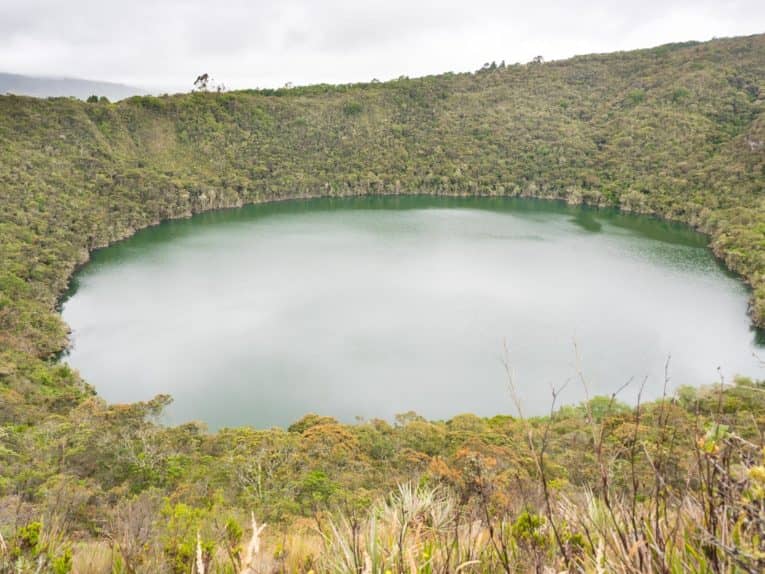
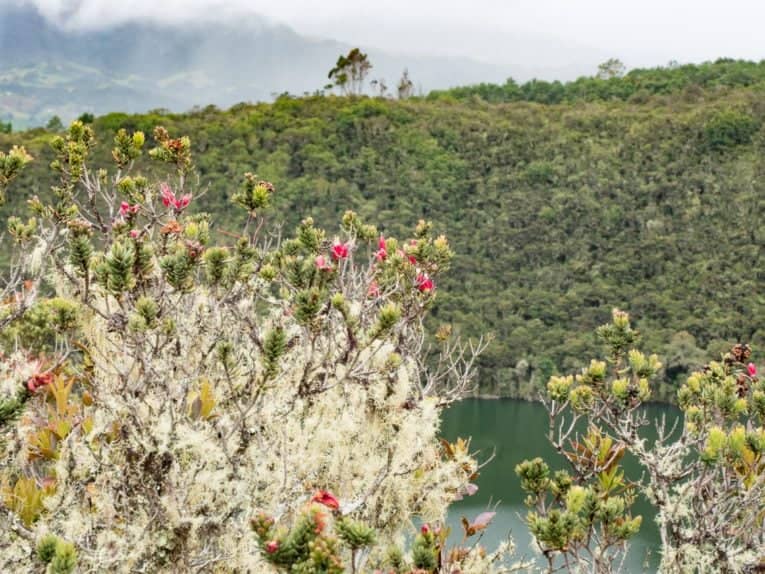
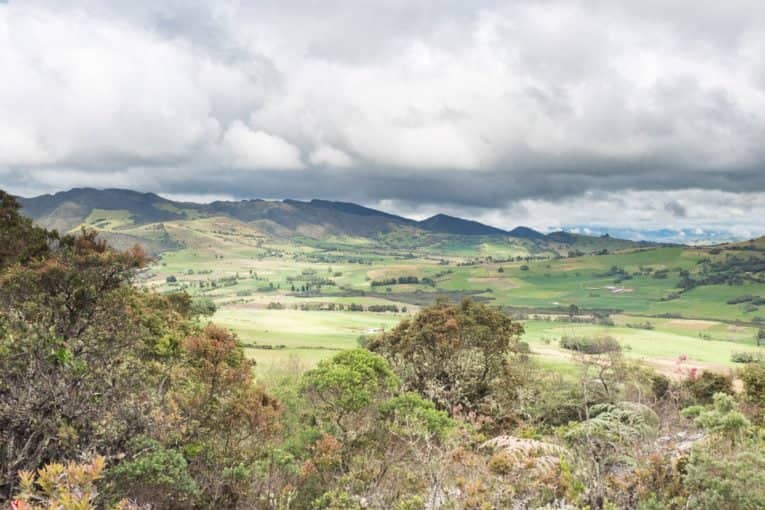
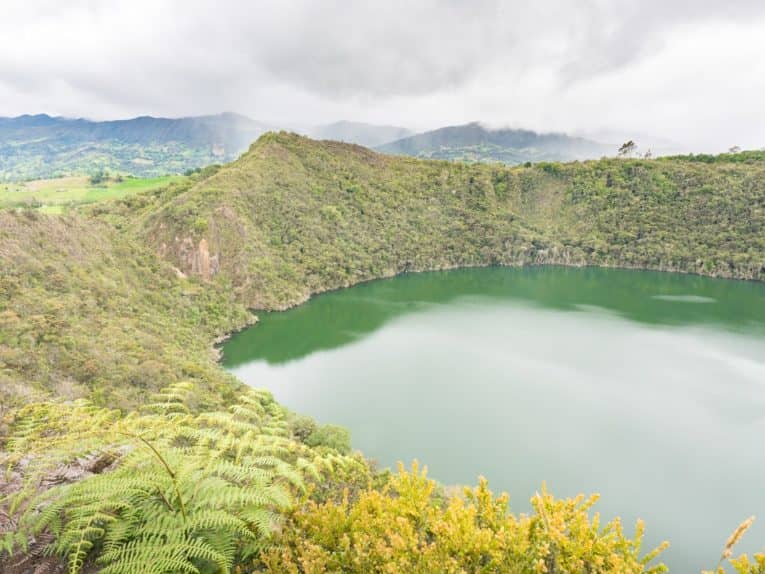
For decades, the colonists searched for this El Dorado, these “cities of gold” that everyone was talking about. The indigenous populations did everything they could to prevent the settlers from finding what they were looking for, giving them false information, diverting them to other lands, all this not to protect their supposed treasure, but rather to protect their sacred site, their lagoon.
Many of the lagoons around Bogotá were sacred ritual sites for the Muisca(such as the iguaque lagoon, not far from Villa de leyva, or the Laguna de Siecha in the Chingaza Natural Park). But it was here, at the Laguna de Guatavita, that one of mankind’s greatest myths was born.
There are so many atrocious stories to be told about what happened here when the conquistadores arrived, but the gash in the Guatavita lagoon is evocative enough to imagine how far the colonists were prepared to go to check whether the legend was true… they tried to empty the lagoon completely of its treasures, but to no avail..
So, let’s talk about Muisca philosophy, which is now highlighted when visiting the recently protected Guatavita lagoon.
Muisca philosophy
WATER – The guide of life, dancing in the universe, present in every one of its manifestations. On its way, it purifies the soul and gives fertility to our earth. Her song accompanies the reflection that springs from the heart. Nothing is static, everything moves, changes, but the essence of things remains the same.
Do you let things go, or do you pretend they always stay in one place?
EARTH – The body of a fertile woman. The earth is always ready to gather the seed and give it energy, so that it can grow on its way to sunlight. Body on which dreams are nurtured. Nurturing mother, advisor and wisdom of the soul.
How are you with your mother? With your body?
FIRE – The life-transforming power of love. It’s the light that shows the way out of the darkness of the fears we hold in our hearts. Controlling the fire of our passions enables us to find peace of mind and light the way for those who come after us.
Do you burn or warm yourself with your fire?
THE WIND – Breath of life. Everything comes and goes, so the thought we project must be filled with love, to receive the warmth of the song and the healing of the mother. Our heart’s messenger, like the hummingbird, gives the call of life to every flower its fleeting flight encounters.
What’s the seed you share when you meet someone on your path?
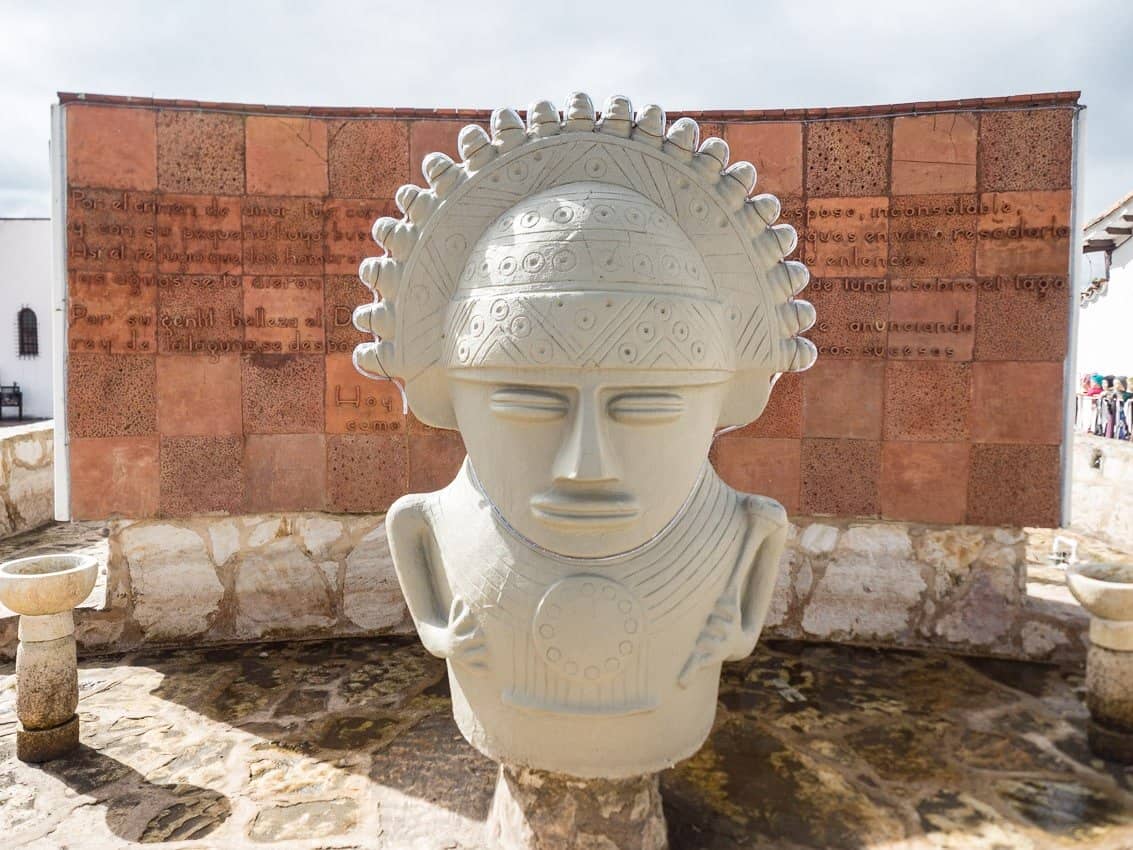
Responsible tourism
Laguna de Guatavita
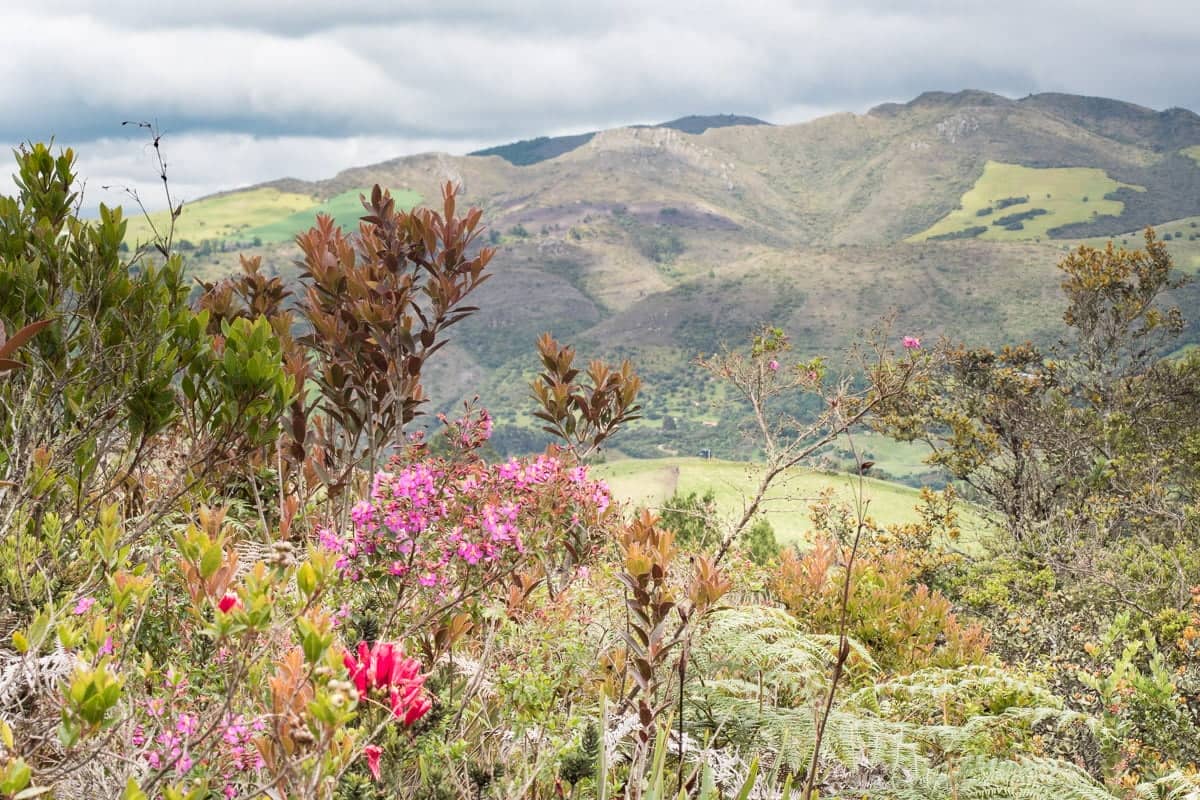
We really enjoyed this walk, the mystique of the place and the energy we felt. It’s also worth highlighting the conservation work that has been carried out over the last few years to protect this park.
As mentioned above, since the dawn of time, this place has been ransacked to extract the treasures buried in its waters. In 1912, foreign gold miners went so far as to completely dry out the lagoon to extract the remains of the gold: a huge gash in the mountain still bears the scars (you can see it in some of our photos). All in vain, as the treasures were buried in the mud of the lake..
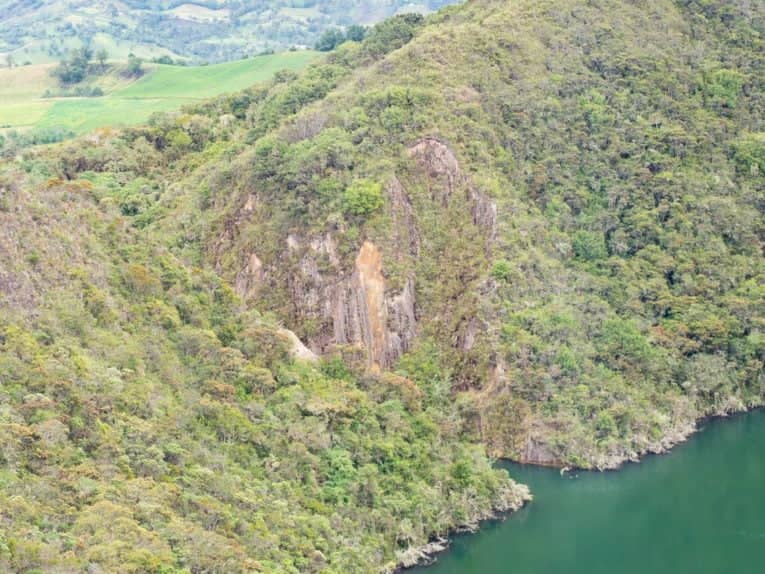

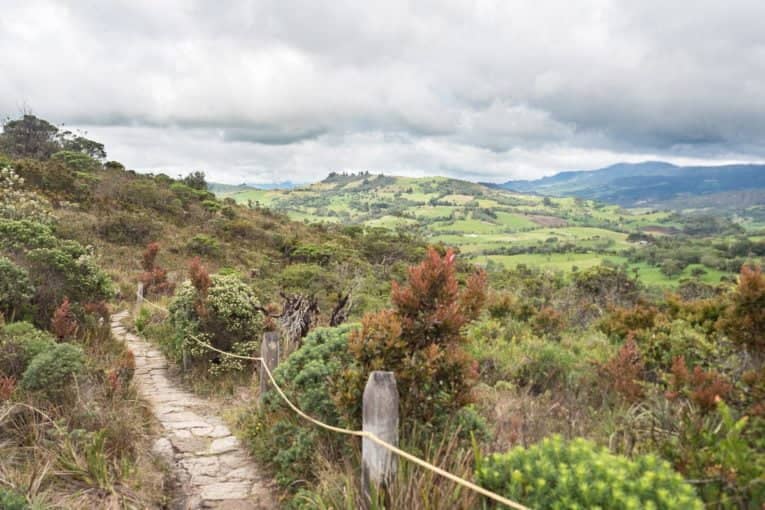
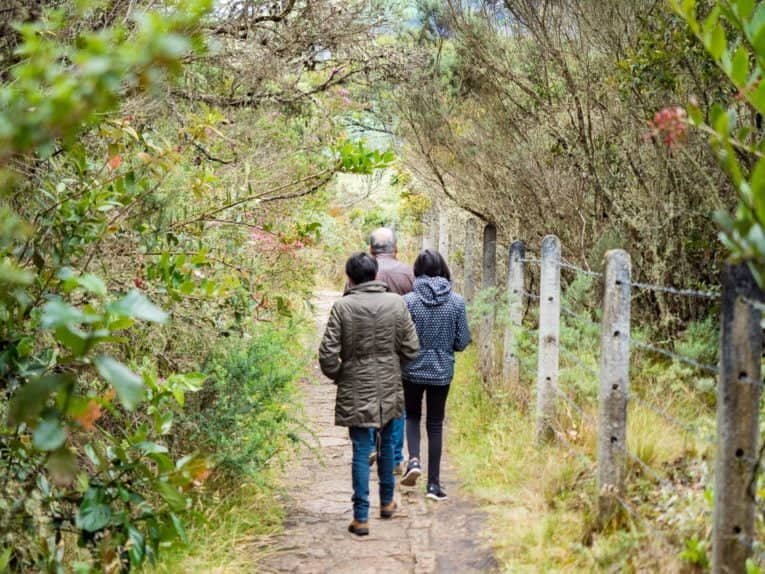
More recently, irresponsible tourists have taken their toll on the ecosystem, leading to an awareness that has resulted in the site being closed to the public. Under the aegis of the Car (regional environmental protection agency), the Guatavita lagoon was closed to the public for almost 10 years to allow the ecosystem, its flora and fauna, to regenerate. Reopened in 2006, the number of visitors is now regulated and no visit is possible without the park’s official guides, who work year-round to preserve the local ecosystem.
Today, a real educational effort is underway to help visitors understand the historical, natural and philosophical significance of the Guatavita lagoon. We learn a great deal about the geological formation of the lagoon, the biotope and the importance of water, but also about the history of the Muiscas… The promotion of Muisca culture is now at the heart of the local development process. Sometimes, members of the Musicas community come to raise public awareness of their culture and tradition.
What to do around Laguna Guatavita
Best places to visit near Bogotá
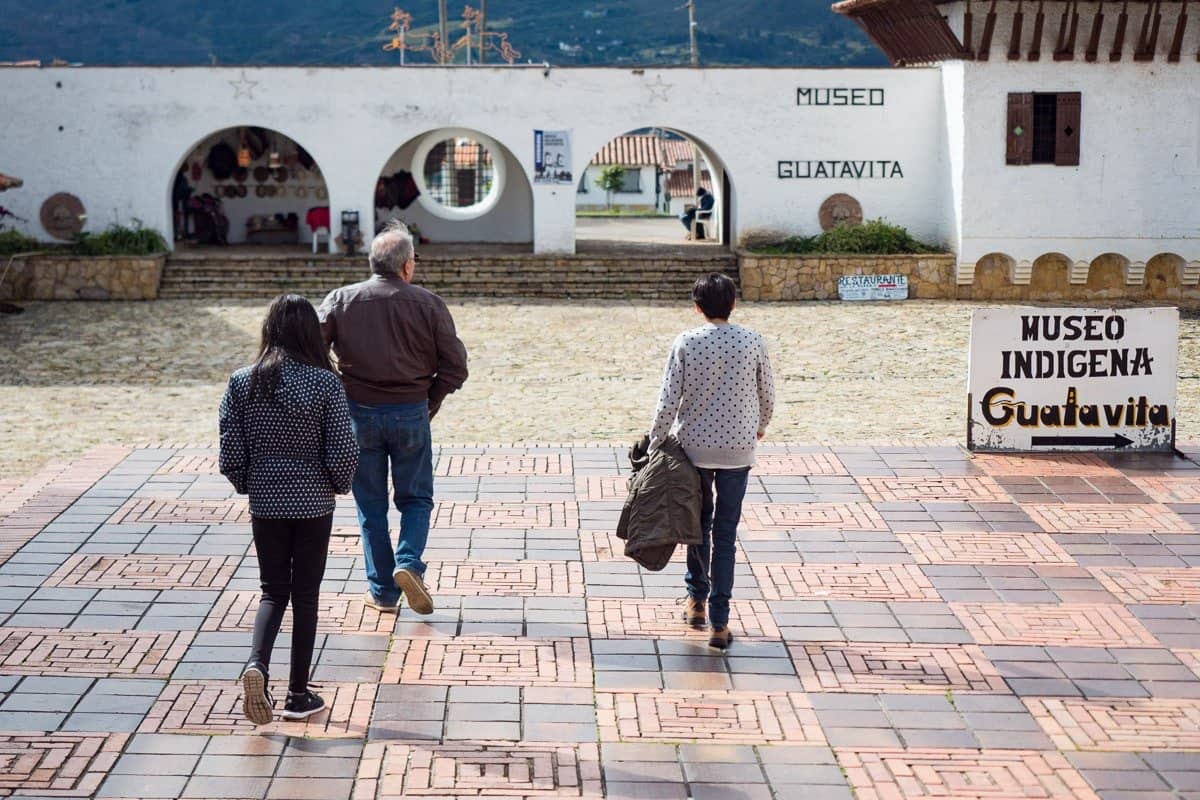
To round off your day on the paseo, take the opportunity to visit Guatavita, a small white village that was rebuilt after being flooded to build the huge Tomine dam you’ll have seen on your way to the lagoon. You can have lunch there, wander the narrow streets and admire (or buy?) the handicrafts. (Although Angélica feels that the quality has changed and prefers the handicrafts found in other Boyaca villages).
Otherwise, if you want to continue in the spirit of nature, you can spend the afternoon by the dam, take a horse ride, go sailing, kayaking or water skiing… You’ll have plenty of options.
A visit to the Tomine dam is a plan in itself, and it’s not uncommon for families or groups of friends to come and spend a weekend day at this lovely spot (Angélica used to come here from time to time as a child). So it’s another option if you want to “live the life of a Bogotano”.
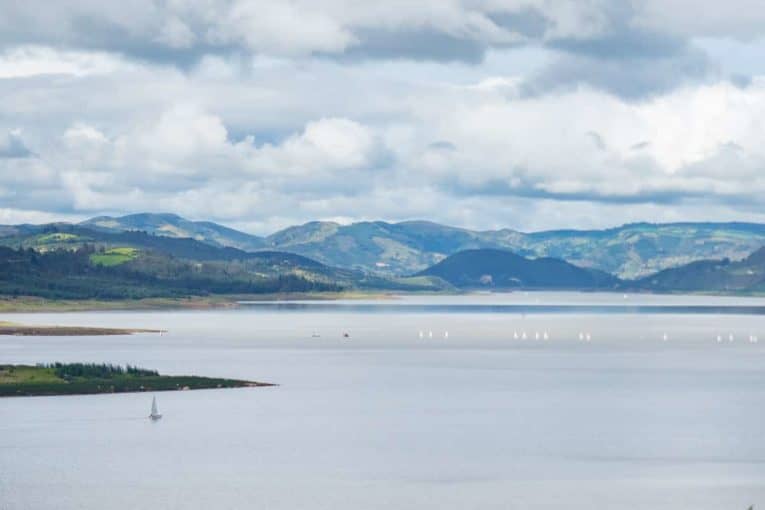
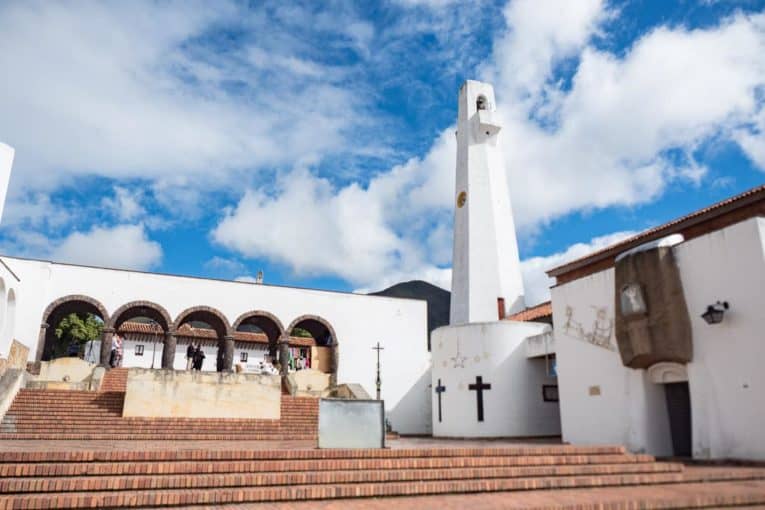
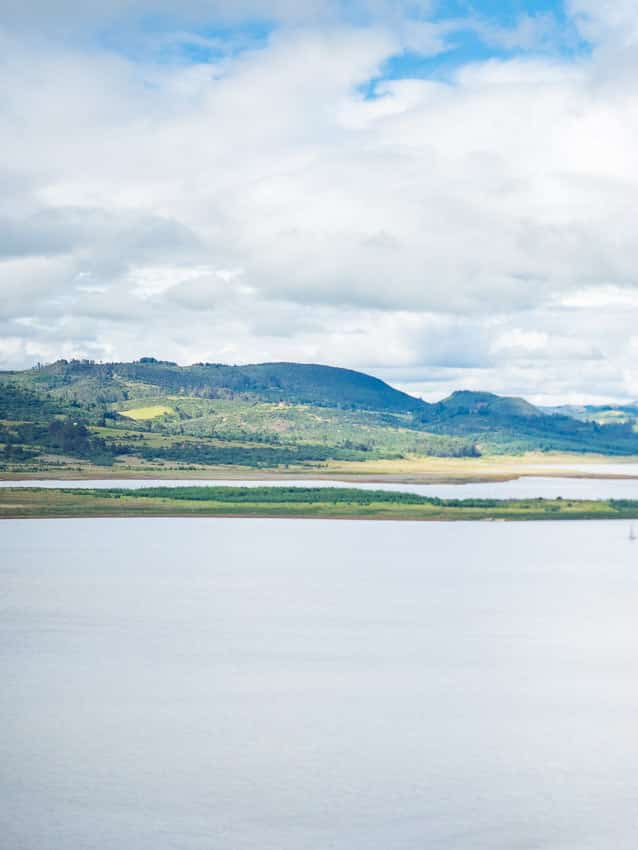
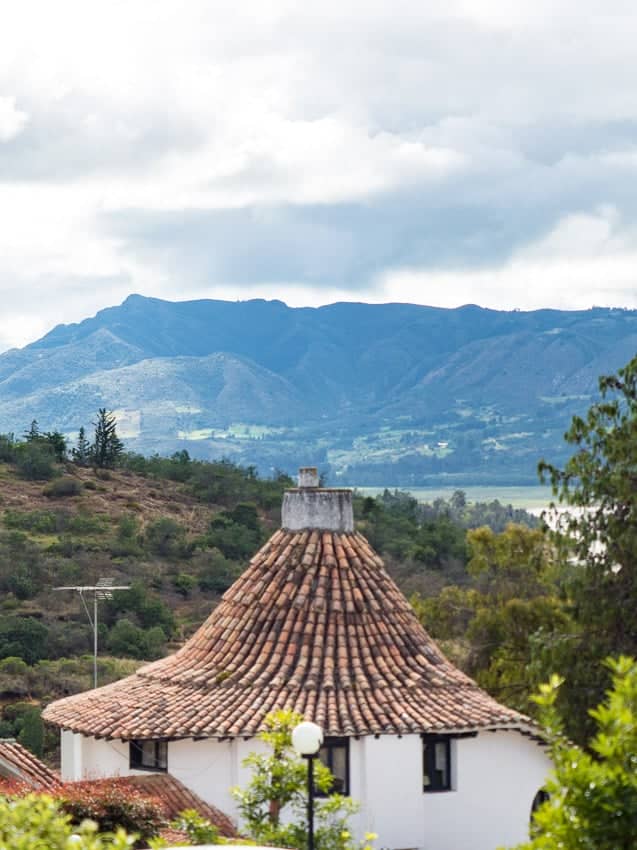
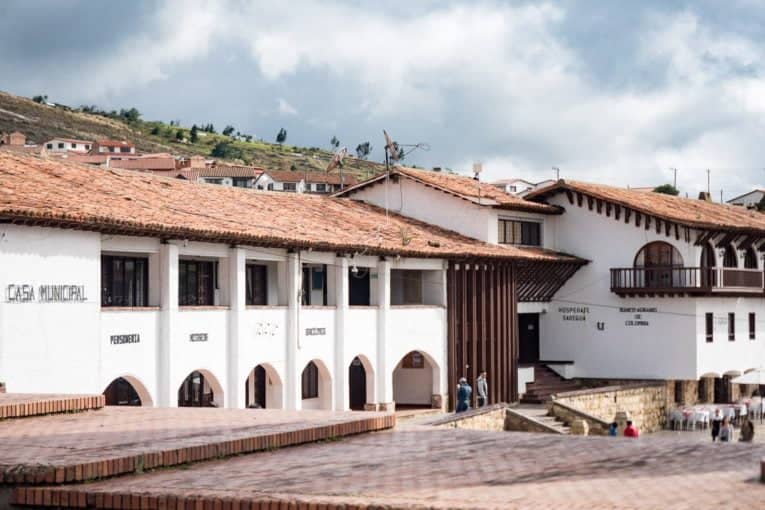
English-speaking guide for Laguna Guatavita
Our local partner Felipe, an English-speaking guide in Bogotá, offers various private excursions from Bogotá, including to the Laguna de Guatavita!
Entrance fee to Laguna Guatavita
For some years now, the lagoon has been a protected area with regulated entry. The entrance fee entitles you to a tour accompanied by one of the park’s guides (for us it was in Spanish, but there may be tours in English, as all the information panels are translated into English).
You’ll learn not only about the history of this site, sacred to the Muiscas, but also about the vegetation and ecosystem you’ll observe along the way.
- Price: $25.500 COP ($18.000 for nationals)
- Length of visit: approx. 2 hours
- Opening hours: Tue-Sun: 8:30am – 4:30pm
Return: The tour leaves via a different route from the entrance. Don’t worry, once at the exit there are small shuttles to take you back to the starting point, or you can walk. You can then ask about taking the busetas to Guatavita or Sesquile.
General information
Footwear: You don’t need hiking boots, just tennis shoes.
Difficulty: This is not a very demanding walk, especially as you take your time to observe and enjoy nature.
Weather: bring something to cover up, as it can be cold and rainy if you’re in the rainy season… Otherwise, bring sun cream.
How to get to Laguna de Guatavita
The Laguna de Guatavita is actually located between the villages of Sesquile and Guatavita.
To get to Laguna de Guatavita, you can take a bus from Bogotá to either Guatavita or Sesquile. From there, take the shuttle bus that brings tourists to the lagoon (only on weekends and public holidays), or take a cab.
A better option would be to rent a car to be more independent, or go with Felipe, our local partner, who will organize the whole day from Bogotá
BUS | Bogota – Sesquile
- Journey time: approx. 2 hours
- Price: approx. $10.000 COP
- From Terminal del Norte
BUS | Bogota – Guatavita
- Journey time: approx. 2 hours
- Price: approx. $10.000 COP
- From Terminal Salitre or Terminal del Norte
SHIPPING | Sesquile or Guatavita – Laguna de Guatavita (weekends and public holidays)
- Duration: approx. 30 min
- Price: approx. $10.000 COP
ATTENTION: Shuttles operate on weekends and public holidays. Outside these periods, it will be more difficult to find a shuttle. The only option is to take a cab to the Laguna.
We advise you to leave early in the morning, as access to the lagoon is only open until 4pm.
HIRE A CAR
For greater autonomy, we recommend renting a car for the day from Bogota.
Practical info BOgota
For all practical information on Bogota, please visit our general article and our dedicated articles:


